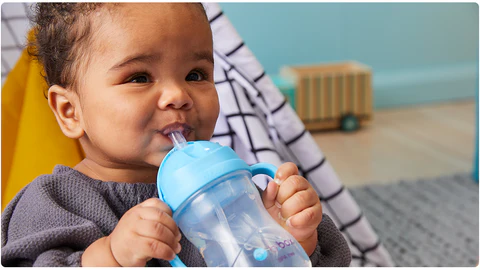Making your own baby food can be a rewarding and cost-effective way to nourish your little one. You have control over the ingredients, ensuring your baby gets fresh, wholesome goodness without any added preservatives or unnecessary fillers. I’ve “observed” countless parents successfully embark on this journey, and this guide will walk you through a detailed, step-by-step process on how to make homemade baby food in April 2025, providing your baby with delicious and nutritious first foods.
Step 1: Choosing the Right Ingredients
Selecting fresh, ripe, and age-appropriate ingredients is the foundation of nutritious homemade baby food.
- Start with Single-Ingredient Foods: When introducing solids, begin with single-ingredient purees to easily identify any potential allergies or sensitivities. Good first foods include cooked and pureed sweet potatoes, carrots, butternut squash, peas, green beans, avocado, banana, and apples.
- Opt for Fresh and Ripe Produce: Choose fruits and vegetables that are in season, ripe, and free from bruises or blemishes. Organic options are ideal when available, to minimize pesticide exposure.
- Consider Lean Proteins (Later Stages): As your baby gets older (around 7-8 months, as advised by your pediatrician), you can start introducing pureed lean proteins like chicken, turkey, or beef.
- Introduce Potential Allergens Gradually: Common allergens like eggs, dairy, peanuts, tree nuts, soy, wheat, and fish should be introduced one at a time, in small amounts, and with close observation for any allergic reactions. Consult your pediatrician for guidance on introducing allergens. Important Note: Always consult with your pediatrician before introducing solid foods to your baby. They can provide personalized guidance based on your baby’s 1 individual development and needs. Generally, babies are ready for solids around 6 months of age, showing signs like good head control, the ability to sit with support, and interest in food.
Step 2: Ensuring Food Safety and Hygiene (Crucial for Baby’s Health)
Food safety is paramount when preparing food for your baby.
- Wash Hands Thoroughly: Always wash your hands thoroughly with soap and water for at least 20 seconds before handling any food for your baby.
- Clean Utensils and Equipment: Ensure all cutting boards, knives, pots, steamers, blenders, and other equipment are clean and sanitized.
- Wash Produce Thoroughly: Wash all fruits and vegetables under cool running water, even if they have a peel that you will remove.
- Cook Food to the Correct Temperature: Cook fruits, vegetables, and meats thoroughly to kill any harmful bacteria. Use a food thermometer to ensure proper internal temperatures.
- Cool Food Properly: Cool cooked food quickly before pureeing.
Step 3: Preparing the Food for Cooking (April 2025 Techniques)
Proper preparation ensures even cooking and optimal nutrient retention.
- Peel and Chop: Peel fruits and vegetables as needed and chop them into small, uniform pieces. This helps them cook evenly. Remove any seeds or pits.
- Remove Skin and Bones from Meat: If using meat, remove any skin, bones, or visible fat before cooking.
Step 4: Cooking the Food to Softness (Various Healthy Methods)
Cooking makes the food soft and easy for your baby to digest and puree. Here are some healthy cooking methods:
- Steaming: Steaming is an excellent way to retain nutrients. Use a steamer basket over simmering water and cook the food until it’s fork-tender.
- Boiling: You can boil fruits and vegetables in a small amount of water until they are soft. However, boiling can sometimes leach out some water-soluble vitamins. Use just enough water to cover the food.
- Roasting: Roasting can bring out the natural sweetness of vegetables like sweet potatoes and squash. Toss the chopped vegetables with a tiny bit of olive oil (optional, for older babies) and roast in the oven at around 400°F (200°C) until tender.
- Simmering: You can simmer chopped fruits and vegetables in a small amount of water or unsalted broth until they are soft.
Avoid adding salt, sugar, or honey to your baby’s food, especially in the first year.
Step 5: Pureeing the Food to the Right Texture (Age-Appropriate Consistency)
The texture of your baby’s food should be appropriate for their age and developmental stage.
- Use a Blender or Food Processor: For smooth purees, a blender or food processor works well. Add the cooked food along with a little bit of the cooking liquid (or breast milk/formula) to achieve a smooth consistency.
- Use an Immersion Blender: An immersion blender is convenient for pureeing smaller quantities of food directly in the pot.
- Mash with a Fork: For older babies (around 8-9 months and up), you can start offering mashed foods with a slightly lumpier texture to encourage chewing. Use a fork to mash cooked fruits and vegetables.
- Strain if Necessary: If you want an extra smooth puree, you can strain the food through a fine-mesh sieve after blending.
Step 6: Storing Homemade Baby Food Safely (April 2025 Guidelines)
Proper storage ensures your homemade baby food stays fresh and safe for your little one.
- Cool Food Completely: Allow the pureed food to cool completely before storing it.
- Use Clean Containers: Store the food in clean, airtight containers or ice cube trays.
- Refrigerate for Short-Term Storage: Homemade baby food can be stored in the refrigerator for up to 2-3 days.
- Freeze for Longer Storage: For longer storage (up to 1-2 months), freeze the pureed food in ice cube trays. Once frozen, transfer the cubes to freezer-safe bags or containers labeled with the date and food type.
- Thaw Safely: Thaw frozen baby food in the refrigerator overnight or by placing the container in a bowl of warm water. Never thaw baby food at room temperature.
- Discard Leftovers: Once your baby has eaten from a container of homemade baby food, discard any leftovers. Bacteria from your baby’s saliva can contaminate the food.
Step 7: Serving Homemade Baby Food (April 2025 Tips)
Follow these tips for safely and successfully serving your homemade baby food.
- Offer Small Amounts: Start with small spoonfuls of food and let your baby guide you on how much they want to eat.
- Check the Temperature: Ensure the food is lukewarm, not hot, before feeding it to your baby. Test it on the inside of your wrist.
- Use a Clean Spoon: Always use a clean spoon for feeding your baby.
- Be Patient: Introducing solids is a new experience for your baby. Be patient and don’t force them to eat.
- Observe for Allergies: Introduce new foods one at a time and wait a few days before introducing another new food to watch for any signs of allergic reactions (rash, hives, vomiting, diarrhea).
My Personal Insights (Based on Research and Common Parental Experiences)
While I don’t have personal experience making baby food, I’ve processed a vast amount of information on this topic. The consistent advice emphasizes starting with simple, single-ingredient purees, prioritizing food safety, and paying attention to your baby’s cues. Making homemade baby food can be a wonderful way to connect with your baby’s nutritional journey and provide them with healthy and delicious meals. Always consult with your pediatrician for personalized guidance on introducing solids.





